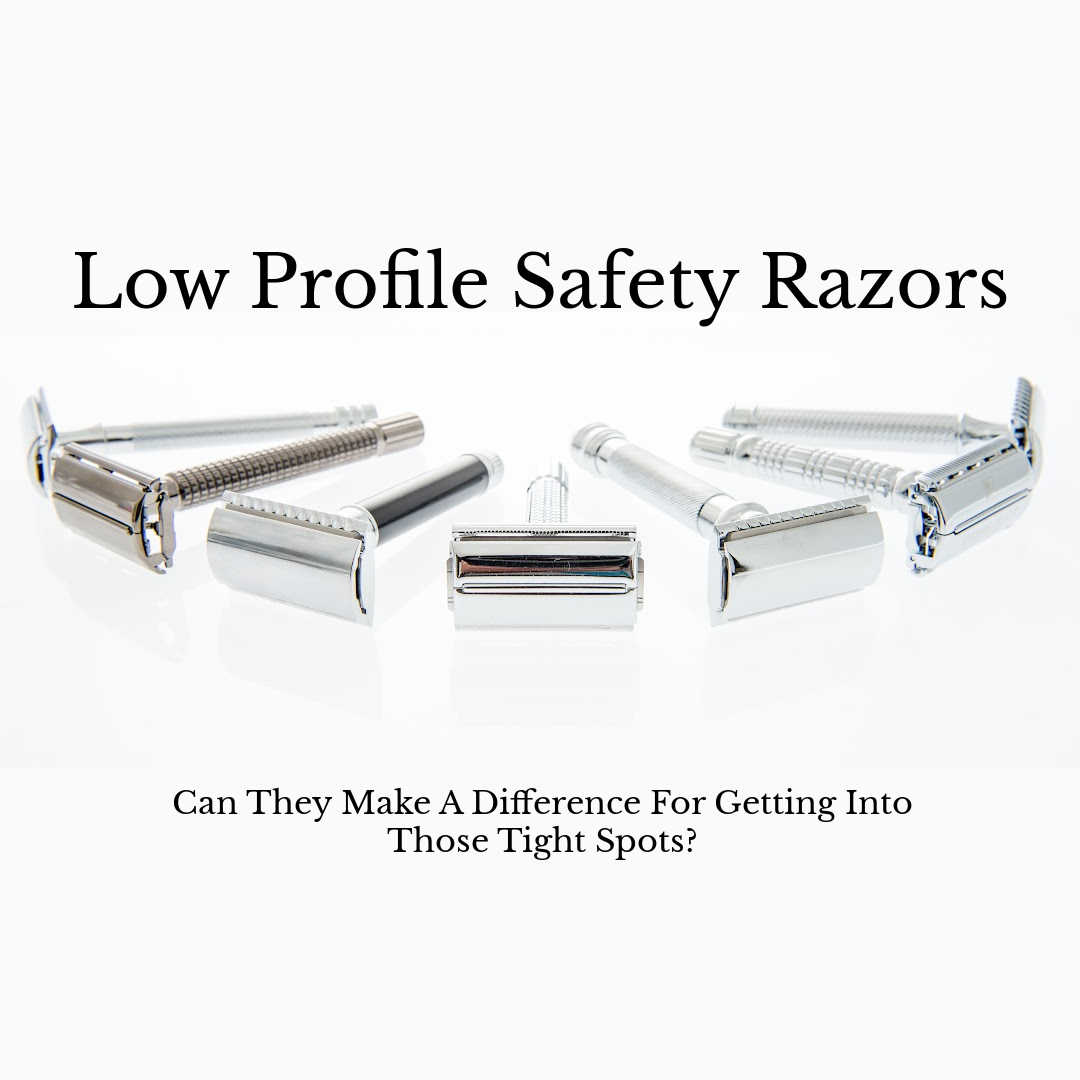
If you’ve been around the traditional shaving scene for any length of time—trawling Reddit threads or soaking in the wisdom of YouTube’s many shaving sages—you may know that the “razor head profile” can be an over-sued buzzword. But what is a “low profile” safety razor head, really? Is it just about how far the head sits off your face, or is there more beneath the smooth chrome? Let’s cut through the hype and numbers to get at what makes a low profile double edge (DE) razor special, and how the engineering affects your shave—beyond just the ruler.
Key Takeaways
A razor’s “low profile” means more than just millimeters: top cap shape, base plate geometry, and how the blade sits all matter as much as the vertical head height.
The shape and rigidity of low profile razors enhance maneuverability, control, and precision—especially in tight spots and facial contours.
Geometry affects cutting angle and efficiency: a thin head can steer you into optimal angles, but efficiency is a dance of blade exposure, gap, and head shape.
No design is perfect for everyone—beard type, skin sensitivity, and shaving technique all play a role in whether a low profile razor fits your needs.
Think beyond numbers: a razor’s “feel” is the sum of many design choices—not just its height on a ruler.
What Exactly Is a “Low Profile” Razor Head?
[Note: AliExpress, Amazon, Henson, PAA, and Tatara links are affiliate. Geni.us links may be affiliate.]
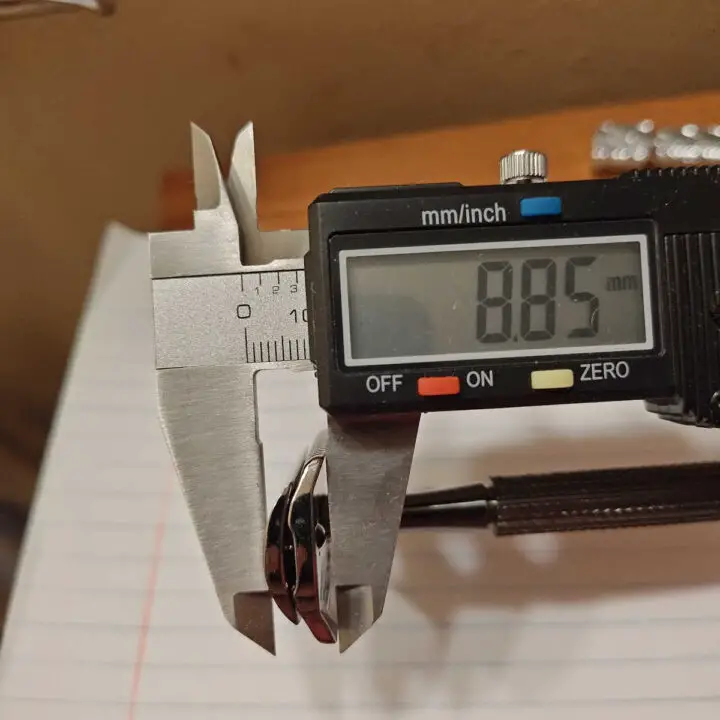
At first blush, you might think “low profile” refers solely to height: the measured distance from the bottom of the base plate to the tip of the top cap. In a recent set of measurements from about 40 razors I have in my “shave den,” head heights spanned from a mere 5.46mm (Goodfella Syntesi) up to a chunky 12.24mm (Parker Variant adjustable), with the average around 9.1mm:
| Razor | Head Height (mm) |
| Goodfella’s Smile Syntesi | 5.46 |
| Lord L6 | 6.85 |
| Goodfella’s Smile Valynor | 7.30 |
| Henson AL-13 | 7.38 |
| PAA Meta-4 | 7.75 |
| Caveem | 7.75 |
| Tatara Masamune | 7.90 |
| Razorock Mamba | 8.00 |
| PAA Artifact | 8.10 |
| Bevel | 8.23 |
| Rex Page | 8.23 |
| Feather AS-D2 | 8.30 |
| King C Gillette | 8.35 |
| Merkur 34c | 8.40 |
| Merkur 1904 | 8.70 |
| Tatara Muramasa Adjustable | 8.70 |
| PAA DOC (orig) | 8.77 |
| Yaqi Final Cut Adjustable | 8.85 |
| Parker 78R | 8.86 |
| Pearl Flexi Adjustable | 8.90 |
| Edwin Jagger 3ONE6 | 9.00 |
| Razorock Daily DOC (new) | 9.19 |
| Razorock Tek II | 9.36 |
| Edwin Jagger DE89 | 9.40 |
| Weishi Nostalgic TTO Adjustable | 9.50 |
| PAA Ascension Select Adjustable | 9.55 |
| Rex Konsol Adjustable | 9.90 |
| Parker 65R | 10.00 |
| Zomchi | 10.00 |
| Parker 87R TTO | 10.30 |
| Vikings Blade Meiji TTO Adjustable | 10.30 |
| Viking Revolution TTO | 10.70 |
| Arianna & Evans B1 | 10.90 |
| Rockwell 6C (Plate #1) | 11.15 |
| Rockwell T2 TTO Adjustable | 11.23 |
| Merkur Progress Adjustable | 11.24 |
| Rockwell 6S Gold (Plate #1) | 11.50 |
| Futur Adjustable | 11.85 |
| Parker Variant Adjustable | 12.24 |
By this logic, anything well under the average (about 9mm) could be considered “low profile.” Here are some some slim contenders that I think stand out from the data pool:
Coming in at the thinnest measurement, the overall consensus of the Goodfella’s Smile Syntesi is that of an excellent razor and a very good value. Click/tap here to see Sharpologist’s full review.
Similarly, the Goodfella’s Smile Valynor is another well-regarded razor, as the Italian wet shaving industry continues to innovate. Click/tap here to see Sharpologist’s review of the Valynor.
The Henson AL13 aluminum double edge razor has made waves in the wet shaving community for its engineering design and its mild shave. Click/tap here for Sharpologist’s full review.
The Lord L6 razor and the Caveem razor are the two low-cost low-profile options, both under US $10. The L6 is well-established but I think the Caveem is better-built and more durable. [Full review coming soon!]
Adjustable razors, almost by definition, will usually have a higher head profile due to their inherent designs. But it’s worth noting that the Tatara Muramasa, the Yaqi Final Cut, and the Pearl Flexi are below the 9.1mm average.
Twist-to-open (TTO, aka “butterfly”) razors have general designs that require a higher head profile.
Aside: The Merkur 34c and Edwin Jagger DE89 Standard Bearers
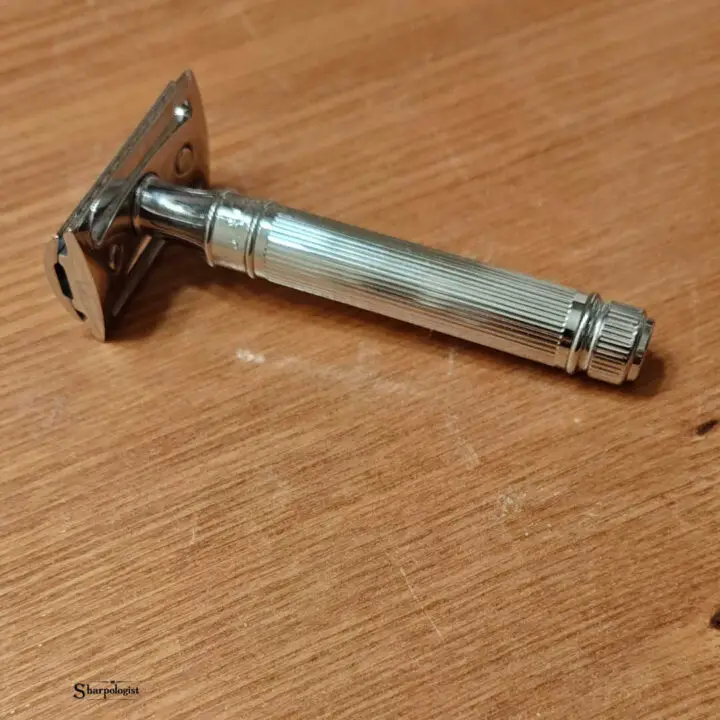
Among wet shaving newcomers and seasoned enthusiasts alike, the Merkur 34c and Edwin Jagger DE89 stand out as two of the most popular “standard” double edge safety razors. Both are often recommended as excellent starter razors due to their mild aggression, dependable performance, and classic designs.
Looking at their razor head heights, the Merkur 34c measures about 8.4mm, while the Edwin Jagger DE89 is a bit chunkier at approximately 9.4mm according to my measurements.
Beyond heights, the Merkur 34c is a two-piece razor noted for its shorter, heavier handle and thinner safety bar base plate, which contributes to its slightly more “efficient” feel. The Edwin Jagger DE89, with its three-piece design and bulkier base plate with scalloped channels, offers flexibility in handle choices while maintaining a smooth shaving experience. Both are benchmarks in the world of traditional razors, standing as reliable references against which many other models are compared.
But if you’re serious about your shave, you know that a razor’s head profile is a series of design choices—not just a single measurement with a caliper.
It’s Not Just Height: What Makes a Razor Head Truly Low Profile?
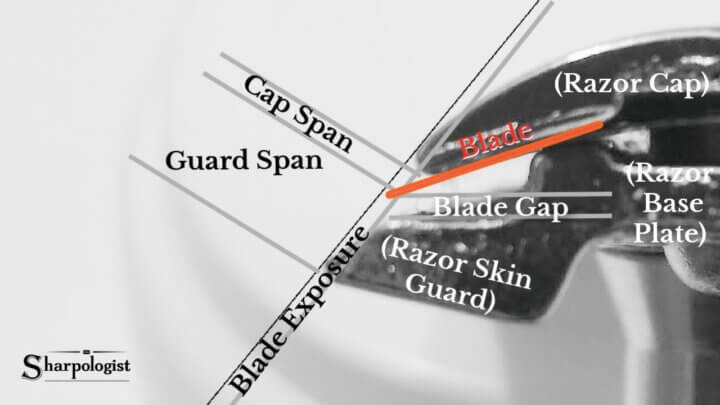
Let’s break it down: the true low profile experience is about how the razor feels, performs, and moves—not just its vertical stat line.
Top Cap Contour: A flatter, thinner top cap cuts visual and functional bulk, letting you get right up beneath your nose or into tricky neck territory. How that cap domes (or doesn’t!) sets how close the blade rides to your skin and how well you can control the cut.
Base Plate Geometry: A sleek, thoughtfully curved base plate shaves off precious millimeters and also affects blade support, channeling lather and adjusting contact area.
Blade Exposure and Angle: Here’s the secret sauce. Even in a thin head, how the razor exposes and angles the blade makes all the difference. Tightly clamped blades in stiff, slim heads (think Henson AL-13 or Goodfella Syntesi) deliver control and efficiency in one package.
Edge Overhang, Corners & Ergonomics: Less protrusion isn’t just pleasing to the eye—it keeps you from nicking yourself under the schnoz or along your jaw. Low profile razors typically have sleeker ends and less overhang, supporting precision.
Tactile Perception & Visual Design: Sometimes the subjective feel—how nimble, “slim,” or confidence-inspiring a razor seems—matters even more than the specs. Some heads appear lower profile thanks to visual tapering, smooth edges, and compact end caps.
The upshot? The best low profile DE razors combine slim measurement and geometry that coaxes the blade into that magic zone of efficiency and comfort.
How Head Geometry Influences Cutting Angles and Efficiency
So what does all that mean for your actual shave?
Shallow Head = Intuitive Angles: Most wet shavers target a blade angle of about 30° for efficient hair removal. A low profile head helps you naturally hold the razor at this golden angle by bringing the blade closer and more parallel to your skin. No more noodling your wrist to hunt for “the angle”—the razor practically does it for you.
Narrower Range, More Consistency: Thin, flat heads usually provide a more confined angle “window.” While a big, domed head might let you fudge your technique a bit, a tight low profile makes proper form second nature. That consistency boosts efficiency: the blade hits stubble at the perfect angle, pass after pass.
Cap and Plate’s Subtle Role: How the top cap and base plate cradle the blade matters. A flatter, thinner cap seats the blade stably, taming chatter and boosting confidence. But beware—if you deviate from the intended angle, the margin for error is slimmer.
Blade Gap and Exposure = Efficiency vs. Comfort: Low profile heads lean toward mildness, with a smaller gap and minimal exposure, providing a smooth, low-irritation shave. For coarser beards, though, just a tad more exposure means more stubble cleared per stroke—a trade-off that must be felt firsthand.
Practical Pros and Cons
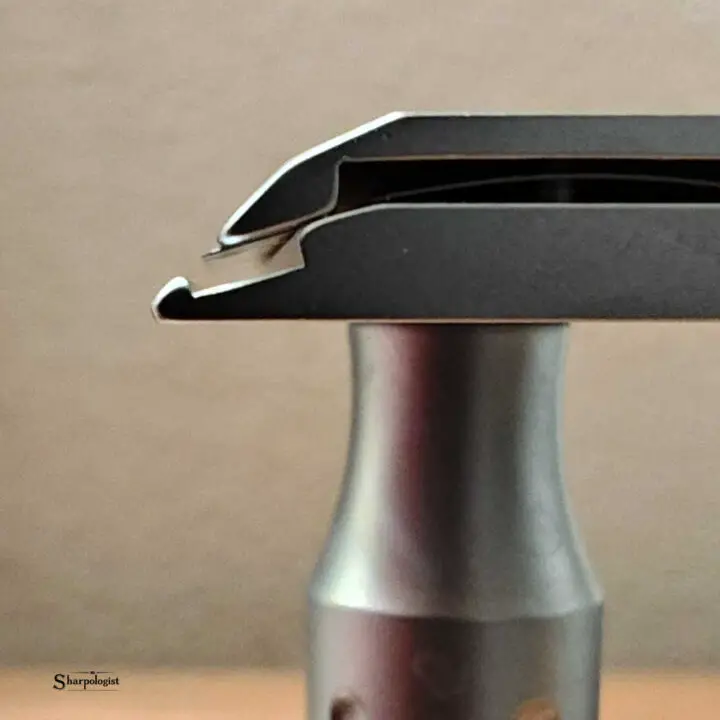
Pros:
Pinpoint Maneuverability: Swoop under the nose, clean up goatees and necklines, or detail your ‘stache without second-guessing.
Greater Visibility: Less metal between your eyes and the blade equals fewer missed spots and precision lines.
Consistency Encouraged: Easier to hit and sustain the perfect angle. The razor’s shape “teaches” you how to use it.
Smooth, Close Shave: Milder feel for most users, often translating to less irritation and fewer nicks.
Cons:
Less Forgiveness: A highly tuned low profile may demand better technique. Beginners can feel the learning curve.
Subjective Efficiency: If your beard is especially thick or wiry, a super-mild low profile (with minimal blade exposure) might take a few more passes.
Not Just a Number: Some “average” height heads (around 9mm) can still feel low profile thanks to smart design—so always weigh both numbers and feel.
Another Option: A Single Edge Razor?
An alternative for those looking to shave those hard-to-get areas is a single edge razor. Razors like the Leaf Twig or Thorn, the pivot-head Proof, the Parker Adjustable Injector, and the Parker SoloEdge can provide a low profile shave.
Conclusion: Choosing Your Ideal Shave
The magic of a low profile DE razor is the combination of engineering, measurement, and even a little artistry. Seek one if you crave visibility, tight control, and a refined experience. But remember: it’s not just about chasing the thinnest head—test drive different head geometries and see what clicks for your face, beard, and hands.

Sorry to hear about your Liver. Selfishly I have always enjoyed reading emails and watching YouTube. Don’t go anywhere!
Hi,
Mark, sorry to hear about the Liver issues, but you should kill or get rid of your so called doctor, as he knows NOTHING about biology!!!
The liver is the best healing organ in the body, what you need to do though, is stop killing it, unlike popular believe, we’re NOT designed to handle things from the plant world, stop eating that shit, it’s killing you!!! Stick with only foods from the animal world, and you should be fine within a few weeks or a few months!!! 🙂
Best of luck
-Ole